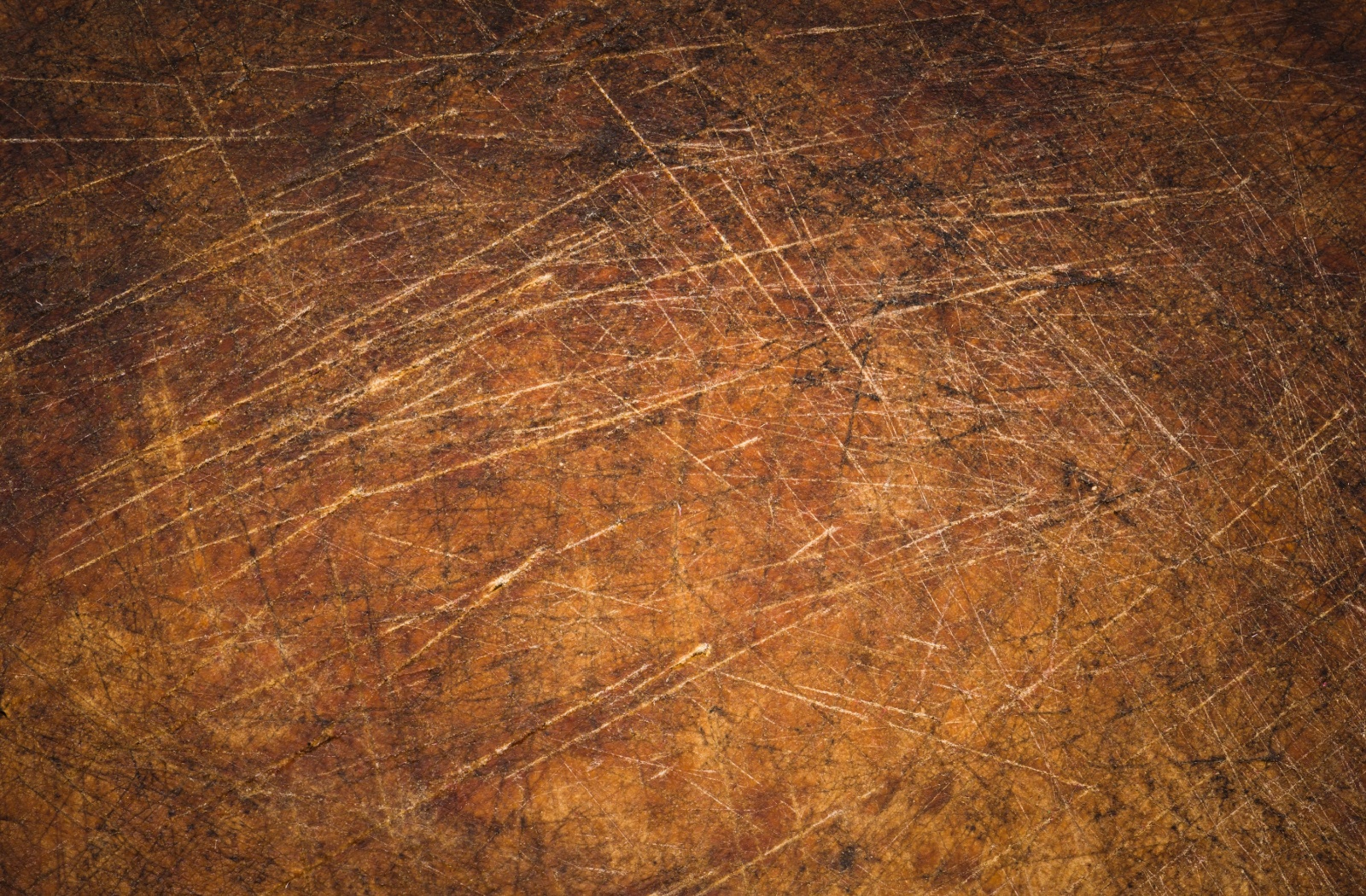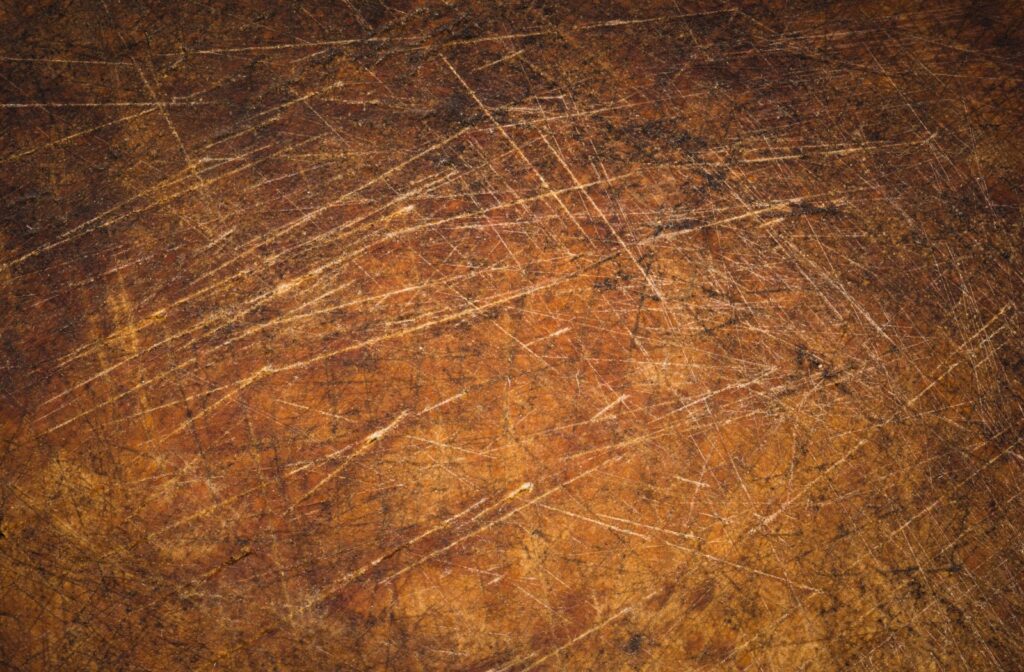Wood furniture can add warmth, charm, and timeless appeal to any room in your home, from your dining room to your bedroom. However, keeping it in pristine condition can be a challenge, especially amidst the hustle and bustle of daily life.
From accidental scratches to environmental impacts, many factors can wear down your wood pieces over time. Fortunately, with the right care routine and preventive measures, you can keep your beloved pieces looking like new for years to come.
The following habits can help you protect your wood furnishings:
- Using protective covers and pads
- Maintaining proper humidity levels
- Avoiding direct sunlight
- Cleaning and polishing your furnishings
- Inspecting your pieces for damage
- Repairing minor damage
- Rotating and repositioning furnishings
- Completing seasonal care and maintenance
Maintaining wood furnishings is important if you want them to last for many years. Learning more about how to protect your wood pieces can make a significant difference in their longevity and lasting aesthetic appeal.
Understanding Common Causes of Scratches & Damage
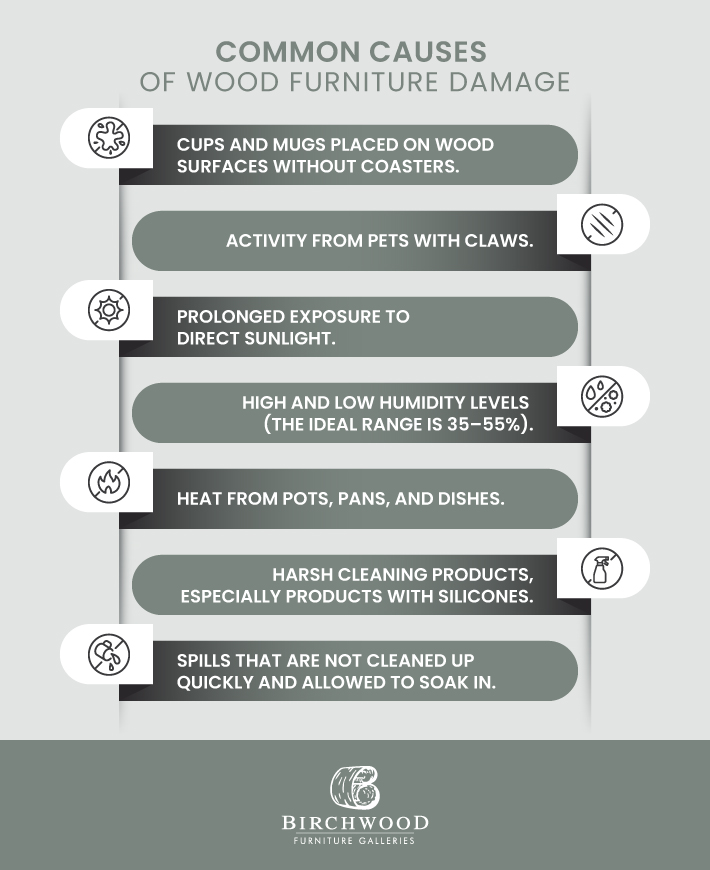
Identifying the common culprits for wear and tear on wood can help you prevent unnecessary damage and take the right precautions.
Everyday Wear & Tear
Daily life can take a toll on your wood pieces over time. For example, dragging objects like vases, books, or plates across wooden surfaces can lead to small but noticeable scratches. Pets jumping on or brushing against furniture may cause claw marks and abrasion. Accidental collisions with sharp or heavy items can also chip or dent the wood.
These are just a few of the everyday activities that can cause visible scratches and surface damage.
Environmental Factors
Wood is a natural material and continues to respond to its environment even when in the form of furniture pieces. So, factors like humidity, temperature fluctuations, and sunlight can significantly impact its longevity.
Humidity or drastic changes in moisture levels can cause the wood to warp or crack over time. Temperature changes may lead to expansion and contraction, weakening the structure of your furniture. Long-term exposure to sunlight may fade the finish, leaving your furniture looking dull and uneven.
Taking care to avoid, prevent, and address these environmental factors can help your wood pieces last longer.
Preventive Measures for Protecting Wood Furniture
Most causes of furniture wear can be minimized—or even avoided altogether—with a few simple habits. These preventive measures can help ensure your wood furniture remains as stunning as the day you brought it home.
Using Protective Covers & Pads
Add an extra layer of defence by using covers and pads for your wood pieces. Tablecloths, coasters, and placemats can shield surfaces from scratches, spills, and heat marks caused by everyday use.
Maintaining Proper Humidity Levels
Humidity greatly impacts the condition of wood furniture. Maintaining an optimal range is crucial for the longevity of your wood pieces.
Ideal humidity levels for wood furnishings typically range between 35 and 55%, but check with your manufacturer’s guidelines. Many warranties recommend a minimum of 35% but they can vary.
One way that you can control your humidity is by using a humidifier during Calgary’s dry winters to prevent cracking, and a dehumidifier during humid summer days to prevent warping.
Avoiding Direct Sunlight
Direct sunlight can cause wood pieces to fade and become discoloured. During the daytime, use curtains or blinds to block sunlight in areas of your home where you have wood pieces—or position your wood pieces away from windows.
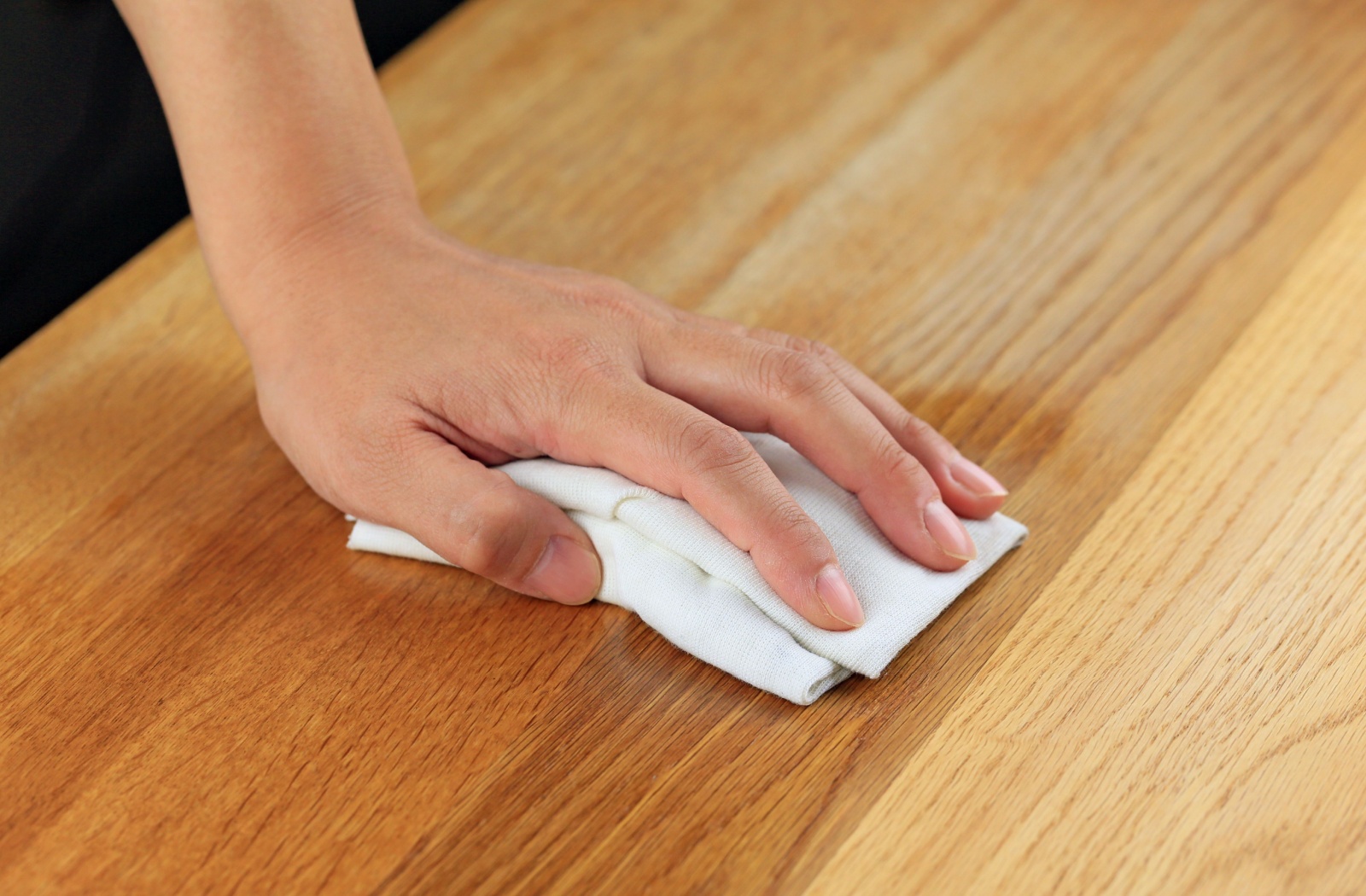
Regular Maintenance to Preserve Wood Furniture
Regular maintenance is just as important as preventive care. A consistent routine will not only keep your furniture looking great but also help you catch potential problems before they worsen.
Cleaning Techniques
Cleaning wood furniture properly ensures its surfaces remain smooth and free of buildup. Use a soft, damp cloth with mild soap and water for daily cleaning. Avoid soaking the wood, and always dry it immediately after wiping.
Polishing & Conditioning
Polishing wood pieces adds a protective layer, while conditioning nourishes the wood. Apply polish sparingly with a soft cloth, moving in the direction of the grain to enhance shine and maintain the finish.
When using a wood conditioner, always use natural wood conditioners that are free of silicones, such as orange oil or beeswax.
Routine Inspections
A quick assessment every now and then can help you spot minor wear early and stop it from becoming major damage. At least once a year, but ideally every 6 months (or when you do seasonal cleaning) inspect your wood pieces and look for issues like loose joints, fading varnishes, and surface scratches.
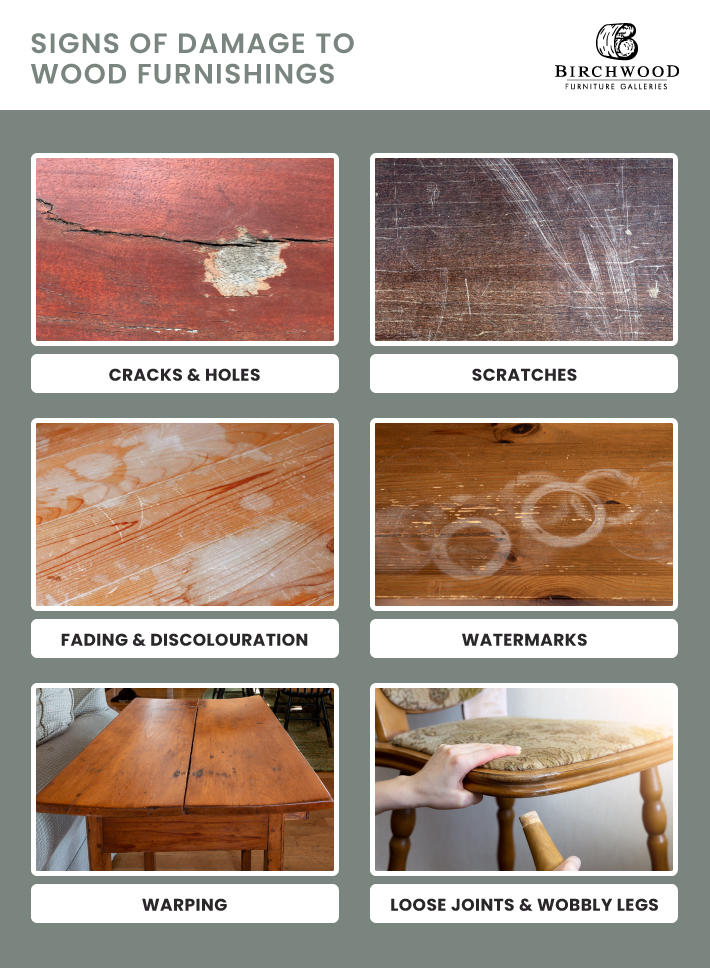
Repairing Minor Scratches & Damage
Even with the best care, accidents happen. Knowing how to handle minor damage can save you time and money. In most cases of damage, such as scratches and dents, it is best to rely on a furniture repair expert.
Professionals can use their expertise to evaluate the extent of the damage and restore your piece to its former glory without compromising its integrity. Hiring an expert also means that you can be confident your piece will receive proper restoration that maintains its value and aesthetics.
Long-Term Care Tips for Wood Furniture
Wood furnishings are not just a beautiful addition to your home—they are also a long-term investment. One of the benefits of solid wood is that it can last for many years, but it is important to prioritize that longevity in the maintenance of your furnishings too.
Fortunately, there are a few simple habits you can follow to give extra support to the longevity of your wood pieces.
Rotating & Repositioning Furniture
Regularly changing the placement of your furniture can prevent uneven wear. Rotate chairs, tables, and dressers to stop wear from building up on a specific part of your wood pieces. When moving furniture, always lift rather than drag it to prevent floor scratches or joint damage.
Seasonal Care Adjustments
In addition to using humidifiers and dehumidifiers to balance out seasonal changes in humidity, you can also reduce humidity by increasing the ventilation in areas of your home where you have wood furnishings.
During the winter months, when heating systems start running, be sure to move your wood pieces away from those sources of heat.
Find Beautiful Wood Pieces for Your Home
Keeping your wood furnishings looking good and making sure they last long often comes down to taking proper care of them, ensuring they are not placed in positions that can make them vulnerable to damage, and seeking help from a professional when damage does occur.
At Birchwood Furniture, we are here to answer any questions you may have about taking care of wood pieces and which wood furnishings might be best for your home. Visit us to see our locally made furnishings in person and get advice from local experts.

